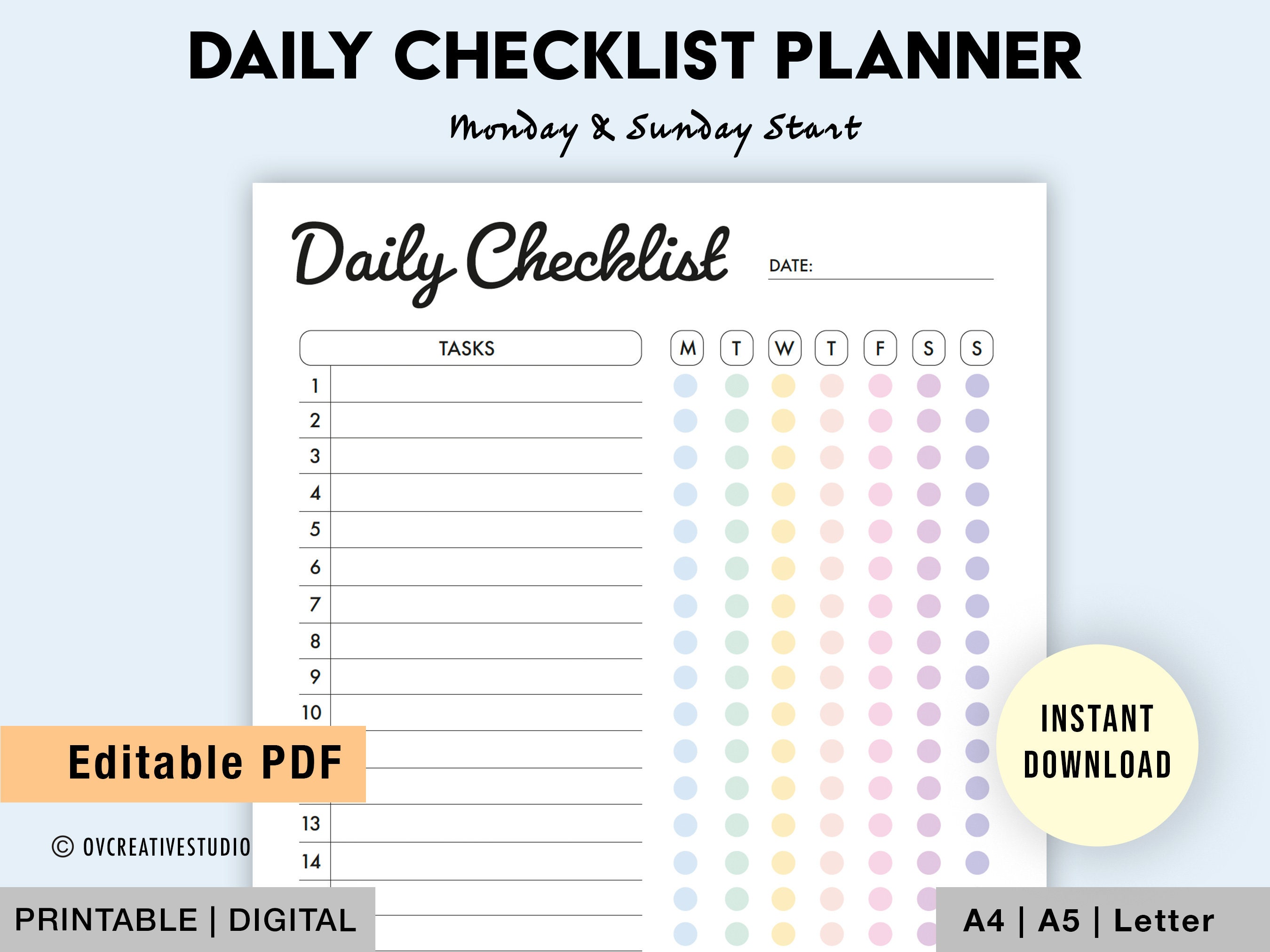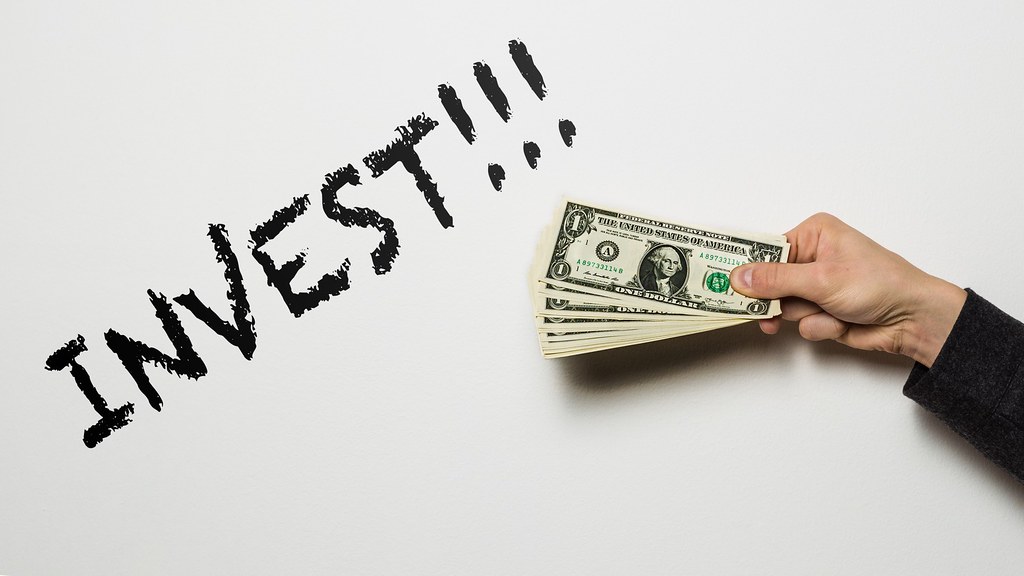
Crafting Your Daily Finance Habit Checklist: A Guide to Financial Well-being
In today’s fast-paced world, where temptations to spend lurk around every corner, mastering your personal finances can feel like an uphill battle. But what if I told you that just a few small, consistent actions each day could significantly improve your financial health? That’s where a daily finance habit checklist comes in.
A daily finance habit checklist is a personalized list of actions you commit to performing each day to improve your understanding, management, and growth of your money. It’s not about drastic measures or deprivation; it’s about building awareness and fostering positive financial behaviors that compound over time.
Why a Daily Finance Habit Checklist?
Before diving into the specifics, let’s explore why a daily checklist can be so powerful:
- Builds Awareness: The simple act of reviewing your finances daily forces you to pay attention. You become more mindful of where your money is going, which is the first step toward controlling it.
- Reinforces Good Habits: Consistency is key to forming any habit. By incorporating financial tasks into your daily routine, you gradually make them second nature.
- Reduces Stress: Financial worries are a major source of stress for many people. Taking proactive steps to manage your money can provide a sense of control and reduce anxiety.
- Identifies Problems Early: A daily check-in allows you to spot potential issues, such as overspending or unusual transactions, before they escalate.
- Boosts Motivation: As you see the positive impact of your daily actions, you’ll feel more motivated to continue and expand your financial goals.
Creating Your Personalized Checklist
The most effective checklist is one that’s tailored to your individual needs, goals, and financial situation. Here’s a step-by-step guide to creating yours:
1. Define Your Financial Goals:
What do you want to achieve with your money? Common goals include:
- Paying off debt
- Building an emergency fund
- Saving for a down payment on a home
- Investing for retirement
- Traveling
- Starting a business
Your goals will influence the specific actions you include on your checklist.
2. Identify Key Areas to Focus On:
Based on your goals, determine which areas of your finances require the most attention. This could include:
- Tracking Spending: Monitoring where your money goes is crucial for identifying areas where you can cut back.
- Budgeting: Creating and sticking to a budget helps you allocate your money effectively and achieve your financial goals.
- Debt Management: If you have debt, focus on strategies to pay it down as quickly as possible.
- Savings and Investments: Prioritize saving and investing to build wealth and secure your financial future.
- Reviewing Accounts: Regularly check your bank and credit card statements for errors or fraudulent activity.
3. Develop Specific, Measurable, Achievable, Relevant, and Time-Bound (SMART) Actions:
Turn your focus areas into concrete actions that you can perform daily. Here are some examples:
- Track Spending:
- "Record all expenses in my budgeting app immediately after making a purchase."
- "Review my credit card transactions to ensure they match my spending."
- Budgeting:
- "Review my budget to ensure I’m on track for the week."
- "Allocate any leftover funds to my savings or debt repayment goals."
- Debt Management:
- "Make an extra payment of $10 toward my credit card debt."
- "Research balance transfer options to lower my interest rates."
- Savings and Investments:
- "Automatically transfer $5 to my emergency fund."
- "Read one article about investing in the stock market."
- Reviewing Accounts:
- "Check my bank account balance and recent transactions."
- "Review my credit score and report for any errors."
4. Keep It Short and Realistic:
Don’t overwhelm yourself with too many tasks. Start with a few key actions that you can realistically accomplish each day. As you get more comfortable, you can gradually add more items to your checklist.
5. Make It Visible and Accessible:
Choose a method for tracking your checklist that works for you. This could be a:
- Physical checklist: A printed list that you keep in a visible location, such as on your refrigerator or desk.
- Digital checklist: A note in your phone, a spreadsheet, or a task management app.
- Calendar reminder: Set daily reminders on your phone or computer to prompt you to complete your checklist.
Example Daily Finance Habit Checklist
Here’s an example of a basic daily finance habit checklist that you can adapt to your own needs:
- Morning:
- Review bank account balances (5 minutes)
- Track expenses from the previous day (5 minutes)
- Evening:
- Review budget for the day (5 minutes)
- Make a small contribution to savings (2 minutes)
Tips for Success
- Start Small: Don’t try to overhaul your finances overnight. Begin with a few manageable tasks and gradually build from there.
- Be Consistent: The key to habit formation is repetition. Stick to your checklist as consistently as possible, even when you don’t feel like it.
- Be Flexible: Life happens, and you may not always be able to complete your checklist perfectly. Don’t beat yourself up over it. Just get back on track the next day.
- Track Your Progress: Monitor your financial progress regularly. This will help you stay motivated and see the positive impact of your daily actions.
- Reward Yourself (Moderately): Celebrate your achievements along the way. This could be a small, inexpensive treat that doesn’t derail your financial goals.
- Re-evaluate Regularly: Your financial goals and circumstances may change over time. Review your checklist periodically and adjust it as needed.
- Automate Where Possible: Set up automatic transfers to savings accounts, bill payments, and investment contributions. Automation reduces the mental effort required to manage your finances and ensures that these important tasks get done consistently.
- Educate Yourself: Dedicate a few minutes each day to learning about personal finance topics. Read articles, listen to podcasts, or take online courses. The more you know, the better equipped you’ll be to make informed financial decisions.
- Find an Accountability Partner: Share your financial goals and checklist with a friend, family member, or financial advisor. Having someone to hold you accountable can increase your chances of success.
Potential Challenges and How to Overcome Them
- Lack of Time: If you’re short on time, break down your checklist into even smaller, more manageable tasks. Even just a few minutes of focused attention each day can make a difference.
- Lack of Motivation: If you’re feeling unmotivated, remind yourself of your financial goals and the reasons why they’re important to you. Visualize the positive outcomes you’ll achieve by sticking to your checklist.
- Overwhelm: If you’re feeling overwhelmed, simplify your checklist by focusing on the most critical tasks. You can always add more items later as you get more comfortable.
- Distractions: Minimize distractions by setting aside a specific time and place to work on your checklist. Turn off notifications on your phone and computer, and let your family or housemates know that you need uninterrupted time.
The Long-Term Benefits
Building a daily finance habit checklist isn’t just about managing your money today; it’s about creating a foundation for long-term financial well-being. By consistently practicing positive financial behaviors, you’ll be well on your way to achieving your goals, reducing stress, and building a secure financial future. Remember, the journey of a thousand miles begins with a single step. Start building your daily finance habit checklist today and take control of your financial destiny.



